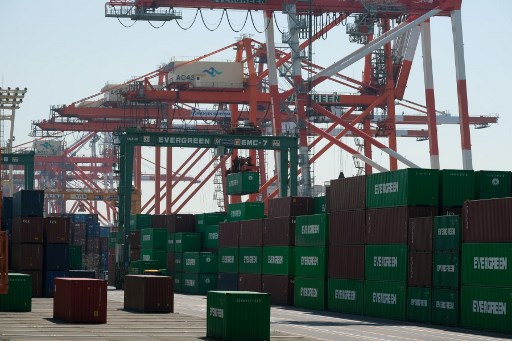
403
Sorry!!
Error! We're sorry, but the page you were looking for doesn't exist.
Iran imports 22.881M tons of basic commodities worth USD17.826B in 11 months
(MENAFN) The Islamic Republic of Iran Customs Administration (IRICA) recently disclosed that during the initial 11 months of the current Iranian calendar year, spanning from March 21, 2023, to February 19, 2024, the country imported a total of 22.881 million tons of basic commodities valued at USD17.826 billion. This import figure signifies a marginal increase of 1.3 percent in terms of weight compared to the corresponding period in the previous year. However, there was a notable decline of five percent in terms of the total import value.
The importation of basic goods plays a crucial role in meeting Iran's domestic consumption demands and ensuring the availability of essential commodities for its population. Despite the slight uptick in the volume of imports, the decrease in the overall import value suggests potential shifts in market dynamics, trade patterns, or pricing structures affecting the cost of imported goods during the specified period.
These statistics underscore the continued importance of imports in sustaining Iran's economy and supporting the livelihoods of its citizens. As Iran navigates various economic challenges and strives to maintain stability amidst evolving global dynamics, the management of import flows and the optimization of trade policies remain critical priorities for policymakers and stakeholders.
Moving forward, close monitoring of import trends and proactive measures to address any fluctuations in import values will be essential to ensure the continued availability and affordability of basic commodities for Iran's population. Additionally, efforts to diversify sources of imports, enhance domestic production capacities, and promote sustainable trade practices will contribute to strengthening Iran's economic resilience and fostering long-term prosperity.
The importation of basic goods plays a crucial role in meeting Iran's domestic consumption demands and ensuring the availability of essential commodities for its population. Despite the slight uptick in the volume of imports, the decrease in the overall import value suggests potential shifts in market dynamics, trade patterns, or pricing structures affecting the cost of imported goods during the specified period.
These statistics underscore the continued importance of imports in sustaining Iran's economy and supporting the livelihoods of its citizens. As Iran navigates various economic challenges and strives to maintain stability amidst evolving global dynamics, the management of import flows and the optimization of trade policies remain critical priorities for policymakers and stakeholders.
Moving forward, close monitoring of import trends and proactive measures to address any fluctuations in import values will be essential to ensure the continued availability and affordability of basic commodities for Iran's population. Additionally, efforts to diversify sources of imports, enhance domestic production capacities, and promote sustainable trade practices will contribute to strengthening Iran's economic resilience and fostering long-term prosperity.

Legal Disclaimer:
MENAFN provides the
information “as is” without warranty of any kind. We do not accept
any responsibility or liability for the accuracy, content, images,
videos, licenses, completeness, legality, or reliability of the information
contained in this article. If you have any complaints or copyright
issues related to this article, kindly contact the provider above.

















Comments
No comment